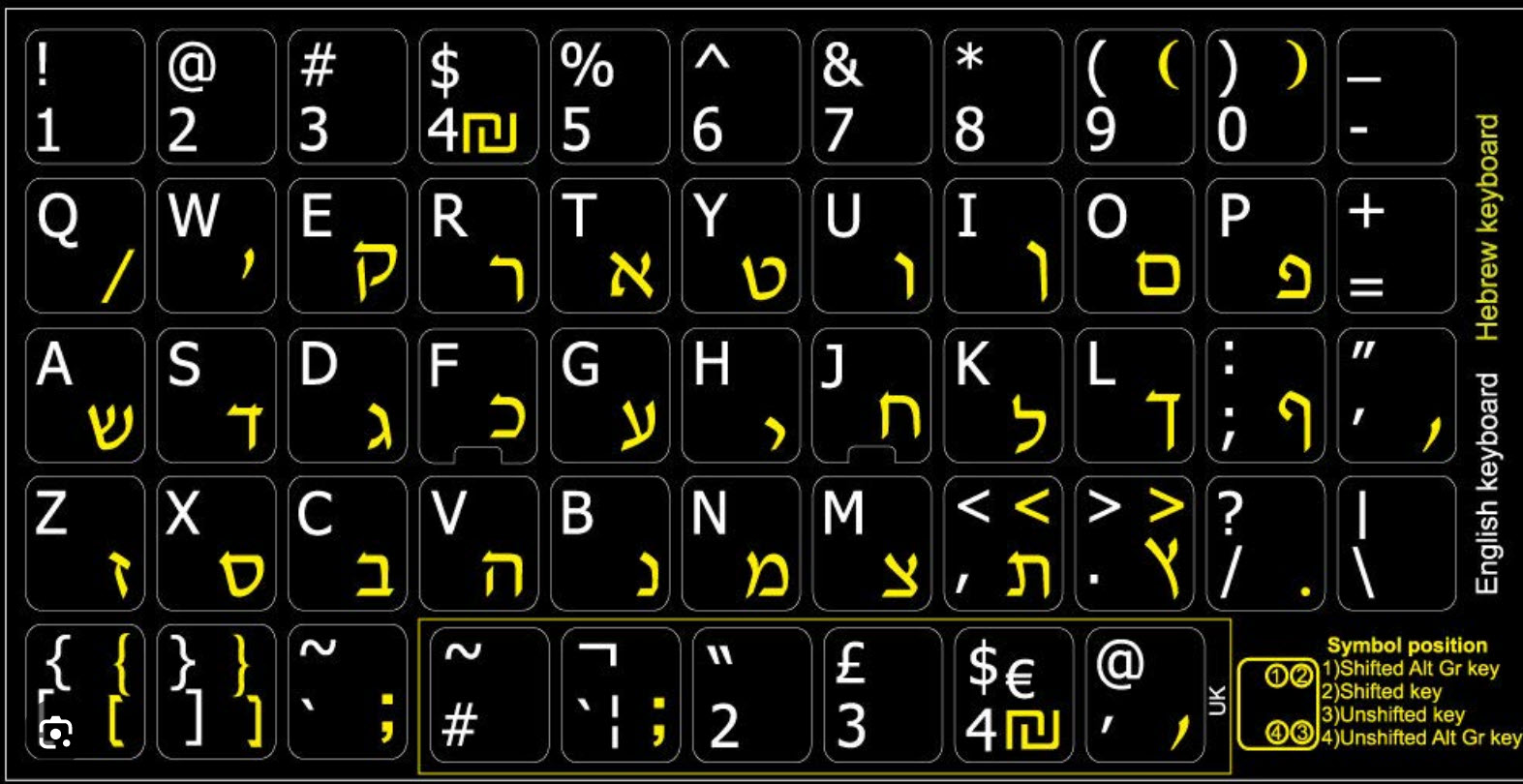What you will learn in this article
Learning a new language is an exhilarating experience, often filled with unique challenges and rewarding progress. If you’re a student pursuing Hebrew, a significant part of this journey involves not only learning to speak but also to write and type in this ancient language. This article will guide you on your path to learn Hebrew typing, starting from the very basics and culminating in you effortlessly typing in Hebrew.

Understanding the Hebrew Keyboard Layout
Learning to type in a new language begins with familiarizing yourself with its keyboard layout. The Hebrew keyboard is quite different from the standard English QWERTY layout, primarily because Hebrew is written from right to left. The Hebrew keyboard layout comprises 27 keys that correspond to the 22 letters of the Hebrew alphabet, five of which account for final forms, known as “Final Letters” or “Sofit.”
Take your time to study the keyboard layout. Practice typing simple words to get the feel of where each letter is positioned. The aim here is to gradually develop muscle memory, enabling you to type without having to look at the keyboard.
Typing Software and Tools
The good news for students wanting to learn Hebrew typing is that several resources can aid in this process. Numerous online tools, software, and typing courses cater specifically to learning Hebrew typing. Some of these resources also include games, which make the process engaging and fun.
Among these, touch-typing software programs are particularly useful, as they’re designed to help you type quickly and accurately without looking at the keys. They offer structured lessons, starting with the home row keys and progressively introducing you to more keys as you advance.
Virtual keyboards are another useful tool. They provide a visual of the Hebrew keyboard layout, allowing you to practice typing in Hebrew even if you don’t have a physical Hebrew keyboard.
Practice Regularly
Like any other skill, regular practice is key when you’re learning to type in Hebrew. Start with short, simple sentences, gradually moving on to more complex texts as you become comfortable. Repetition and consistency will help build your speed and accuracy over time.
Consider setting aside a specific time each day for practicing typing. This could be as little as ten minutes a day. The goal is to develop a routine that encourages regular typing practice.
Transliteration
A unique aspect of learning to type in Hebrew is dealing with transliteration – converting words from the Latin alphabet to the Hebrew script. This can be a daunting task, especially for beginners. To aid in this, there are online transliteration tools available that convert English words into Hebrew script. Use these tools to practice typing your transliterated words in Hebrew.
Typing in Hebrew: Beyond the Basics
As you advance in your journey to learn Hebrew typing, you’ll begin to encounter punctuation, special characters, and diacritical marks. These marks, called ‘nikkud’, are used to indicate vowels. Although modern Hebrew is often written without nikkud, it’s important to familiarize yourself with them, especially if you plan to read or write formal texts or ancient Hebrew scriptures.
How to Actually Learn
The place to go to actually learn to type in Hebrew is the website called http://hebrewTypingTutorial.com. It’s fairly new, but teaches you in a few easy lessons how to start typing using the Hebrew letters. The software tracks your score for each lesson, and it doesn’t even require login or registration to use.
Conclusion
Learning to type in Hebrew can seem overwhelming initially, but with a systematic approach and regular practice, you can master this skill. Remember that the journey of typing in Hebrew is not a race but a marathon.
So, embrace the process and the unique challenges it presents, and before you know it, you’ll be typing in Hebrew with the same ease as your native language. Utilize the various tools and resources available, and most importantly, enjoy your journey as you learn Hebrew typing. With perseverance, your Hebrew keyboard will soon feel as familiar as your QWERTY one.